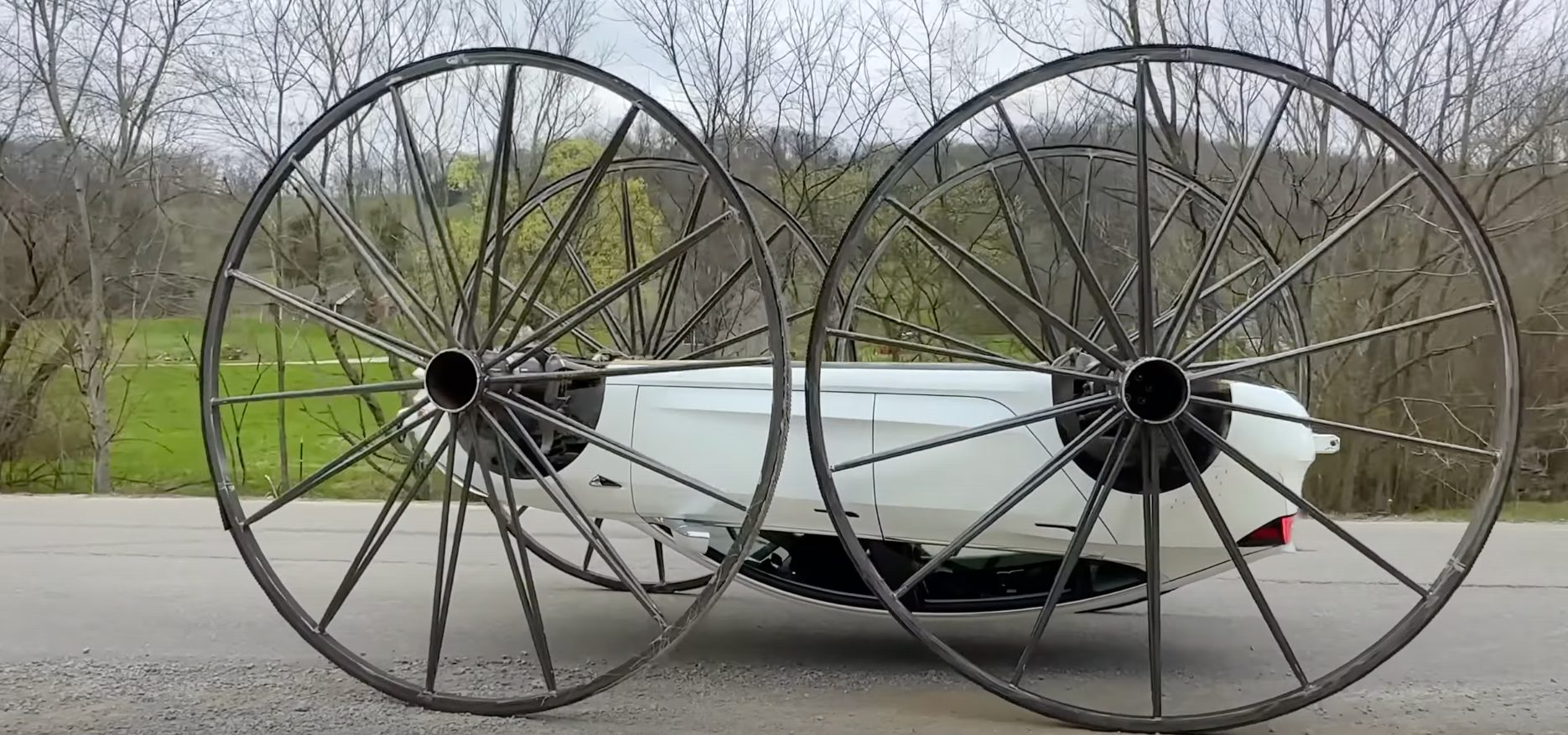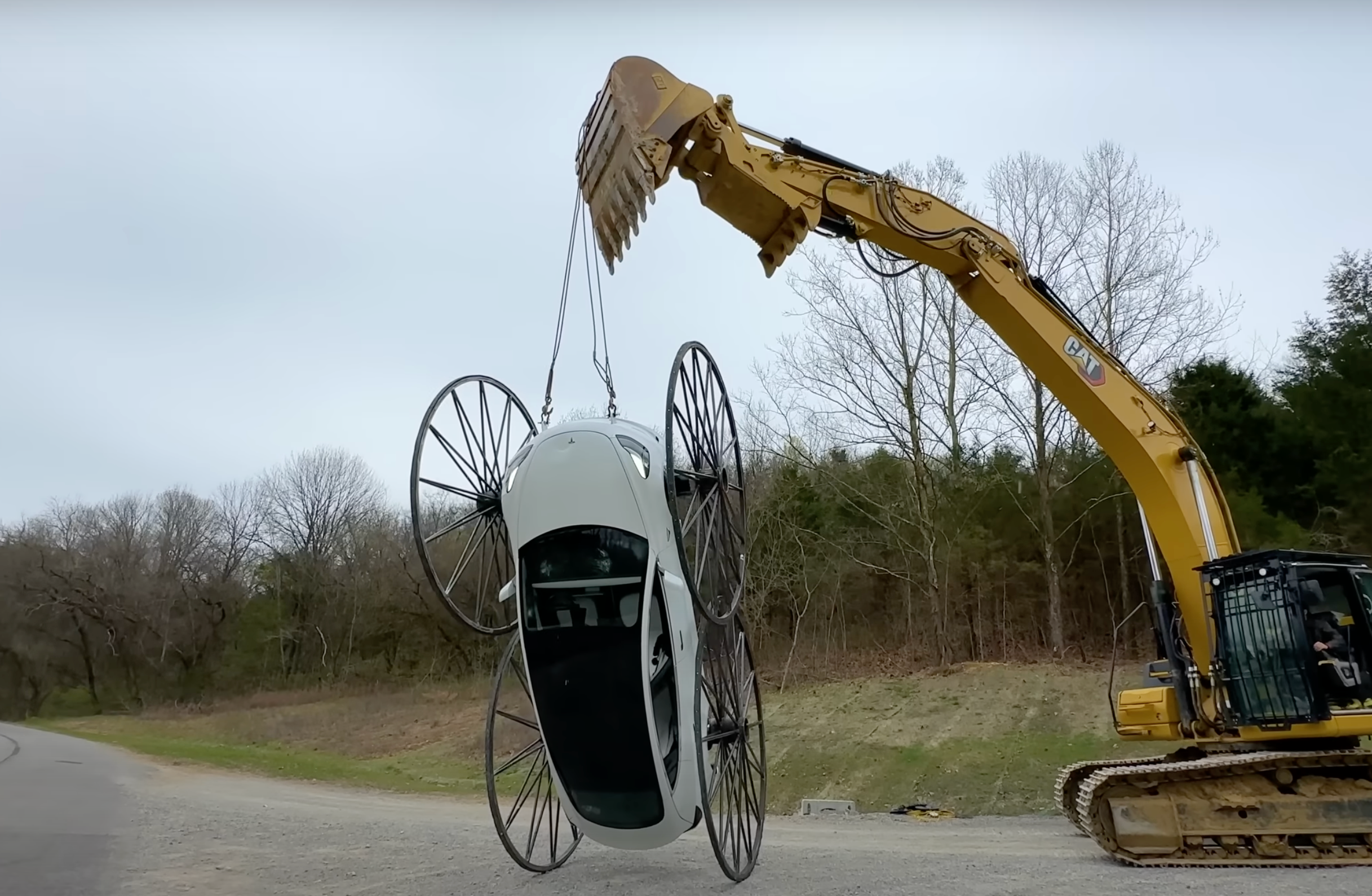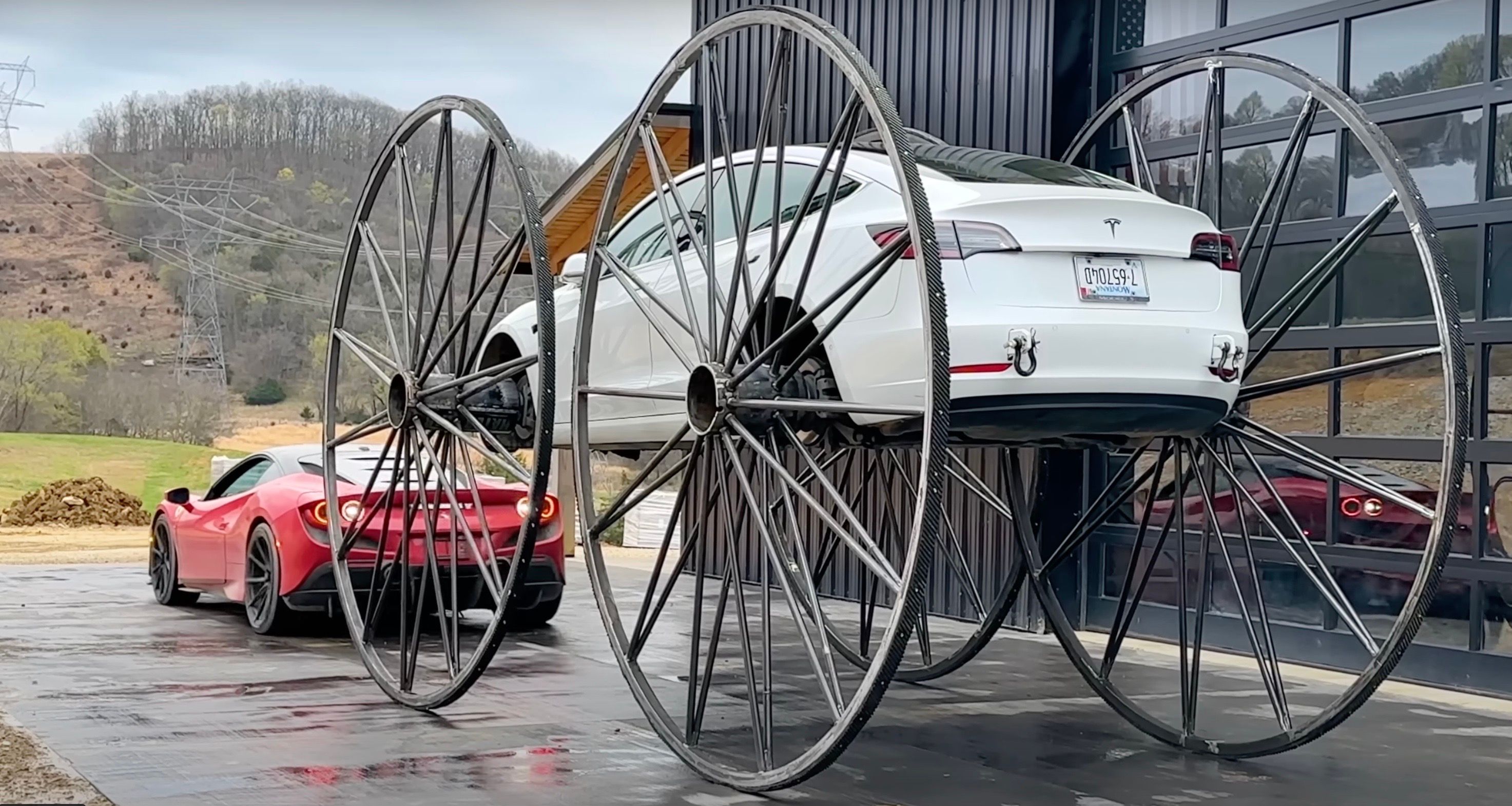When the world thought it had seen it all a Tesla was capable, Whistlin Diesel raised the bar. Taking a new Model 3 and installing ten-foot-tall wagon wheels on it might not be first on everyone’s to-do list, and while the electric vehicle it doesn’t do other abuse and durability tests, watching it drive upside down is really something else. Tesla fans may want to look the other way as things don’t end well for the Model 3. Doomed from the start, those familiar with Whistlin Diesel are probably aware that this Tesla didn’t stand much of a chance, but done came out out with a bang If a Tesla can do this, is there anything the luxury electric sedan can’t? If there is, these guys will find out and film it.
How did this Model 3 end up with massive wagon wheels installed?
Onlookers can tell the Tesla is in for a tough time almost immediately. When the car first comes into view, a set of brackets appear on the front and rear bumpers and are probably welded to the frame of the car. In addition to the mounts, five-point racing harnesses have been installed on the driver’s seat. After setting off with a parking boot anchored to the front wheel and some extreme brake testing, things started to get interesting. The Model 3 is driven through a garage door into a shop and parked a hundred and fifteen inches on two-inch wagon wheels. Assembly Industries supplied the wheels that look comical on the side of the Tesla because they extend above the roofline. The brackets that extend through the bumper come into play next when the Model 3 is lifted with a forklift. It’s not the standard method of raising a car, but these are no ordinary wheels. With the Tesla now about five feet in the air, they park a red Ferrari under the EV to show how high it actually is. One thing you might want to consider is opening the doors. Due to the diameter of the wheels and how close the doors are to the wheels, they only open about ten inches. Using a bulldozer this time, the Tesla is lifted up and turned around. With the roof just inches off the ground, the Model 3 makes its maiden voyage upside down.
Will Teslas computer system allow the Model 3 to drive upside down?
There is no doubt that all Teslas are quite advanced in terms of technology. There are sensors and warnings for everything inside and outside the car. Safety features are also a big part of the Tesla brand, and with Autopilot being an option, it’s hard to imagine the vehicle operating if you think it might be in reverse. Despite these facts, the Model 3 succeeds. The car was modified to help it flip, and we are not aware of any safety features or sensors that have been disabled to allow this stunt. The biggest advantage of using the Model 3 for this type of activity is that they are equipped with a standard style coil spring suspension. Other Tesla models, such as the Model S, are equipped with an air suspension and height sensors in each air shock. The sensors send a signal to the car’s computer and allow it to self-adjust based on input from the sensors. On the latest Model S, a lift mode must be engaged before raising the car for repairs, as the suspension adjusts even when the vehicle is turned off. Flipping a car equipped with air suspension would likely trigger a fault code and disable the vehicle, leaving it inoperable. All the other sensors on the Model 3 are probably working as expected. The front and rear detection sensors are only meant to identify objects within a certain distance, and height would not affect how they are read. The same goes for lane detection and side impact sensors. Although at a different height, its sole function is to warn the driver of nearby objects. Another advantage of trying this with an electric vehicle is that no fuel or oil is needed to run the car. Fuel and oil pumps are designed to pull from the bottom of the oil pan or fuel tank in whatever vehicle they are located. Taking a production vehicle with an internal combustion engine would run the engine and fuel and allow oil to get into the valve cover. and through any intake or exhaust valve open at the time. While most systems could be modified to allow operation to continue while being reversed, in this case all that was needed was a set of ten foot high wagon wheels.
This Model 3 may be the only Tesla to drive upside down
No matter how expensive or advanced certain vehicles are, people always want more. Whether it’s putting your own personal touch on it or using it in a way it wasn’t intended, vehicles are constantly put to the test. Teslas are frequently seen at dragstrips and on the highways. Some have chosen to strip the interiors to lose weight and reduce their times; others have added wheels or modified the suspension to achieve a specific look. Vinyl wrap is also very popular with Tesla for those who want to set their car apart from the crowd. Some of the more extreme examples include a video of a driver taking a Model S into the air over a large hill and eventually crashing after the car hits the ground. Another overzealous owner decided to take his Tesla underwater. After filling the vehicle with weights and covering all seams and openings with a plastic barrier, the car is driven through a man-made pond of water up to the roof line. Although not its intended use, the design of the vehicle can withstand inclement weather and pass through small amounts of standing water. While everything mentioned here is a way to push the envelope with Tesla, or any vehicle for that matter, driving one upside down with massive wagon wheels is definitely a first. The search resulted in a few other stunts, but all were performed right side up. It is not known how this Model 3 performed after being upside down, as shortly after it was right, it was dragged into a tree, and the video ended. Although this Model 3 required repairs after being driven upside down, it is the only one that has successfully done so. It’s hard to imagine that the Tesla was bought strictly for this purpose, so it can come back. It will be interesting to see if any Tesla owners try to raise the bar in the future with other wild ideas.





